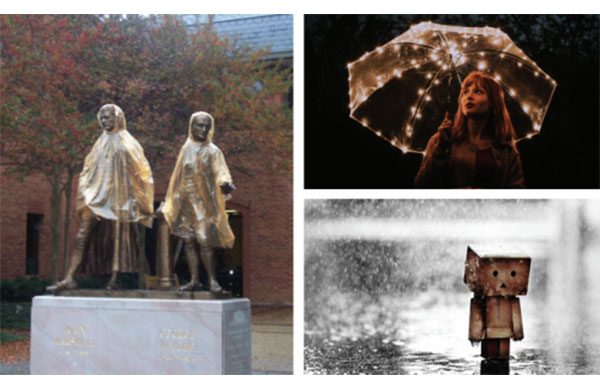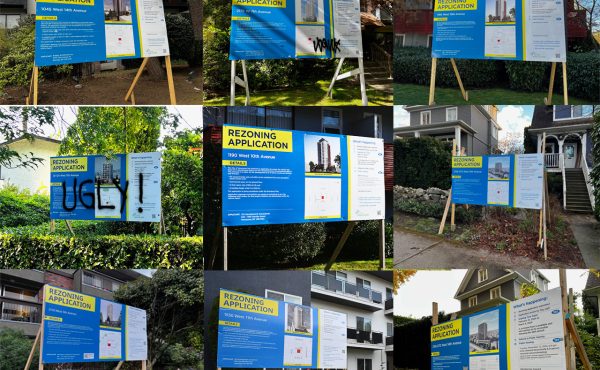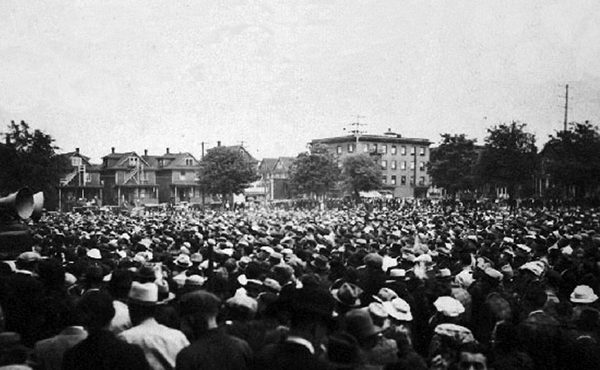It is no secret that it rains a lot in Vancouver. The city sees over 160 rainy days a year – with much of it falling between October and March. Should we all just hibernate for 6 months a year?
The Vancouver Public Space Network (VPSN) thinks not. A few months ago, the VPSN launched “Life Between Umbrellas” an initiative to examine how public spaces can be designed and programmed to be more rain-friendly.
In keeping with the above, they released 10 draft principles for rain-friendly public spaces. The principles were created based on research into local and global best practices, as well as over 400 ideas submitted by Vancouverites during engagement activities held in February and March.
Once these principles are finalized, they will be shared with the City and the local community of architects and landscape architects. Later this year, the VPSN will also be launching a design ideas competition and invite people to develop detailed ideas for rain-friendly public spaces.
The 10 draft principles are as follows:
Principle #1 Rain-friendly public spaces enable protection from the elements
The design of rain-friendly spaces should include features that protect users from inclement weather and enable a measure of comfort during a downpour. Examples include wider sidewalk canopies, warming shelters, and overhead shelters in parts of playgrounds and parks.
Principle #2 Rain-friendly public spaces provide a smart response to grey, overcast and wet weather
Good design will act as a counterpoint to the darker aspects of the rainy season, adding brightness and other sensory measures to enliven public spaces. Some examples include colourful buildings, glass gazebos or pergolas, and feature lighting.
Principle #3 Rain-friendly public spaces support a range of activities and programming
Effective programming supports public life during the rainy months by providing ways to help people make the most of a rainy day. Some examples put forward include dance parties in the rain, rainforest walks, and poncho puddle parties.
Principle #4 Rain-friendly public spaces foster social inclusion
Good public space is accessible to, and engaging for people of all ages, abilities, and life circumstances. Rain-friendly public space should recognize the additional challenges for getting around during cold and wet-weather. Examples to address this include covered paths for scooters and rain-friendly programming at parks and plazas frequented by low-income or street involved residents.
Principle #5 Rain-friendly public spaces strengthen health and well-being when it’s harder to go outside
Rainy weather can create a barrier to physical activity. The cold, darker months can also impact mental health. Rain-friendly public spaces support health and well-being by ensuring opportunities for exercise and social interaction. Examples include planning rainy day neighbour-making initiatives and ensuring full-spectrum lighting in public spaces.
Principle #6 Rain-friendly public spaces account for specific weather-related safety
Studies show the chance of a road-related injury in rainy weather is 2-3 times greater than during dry weather. Rain-friendly public spaces work to enhance safety for all – especially vulnerable road users such as pedestrians and cyclists. Examples to promote safety include slower travel speeds and complete street design to support all modes of travel.
Principle #7 Rain-friendly public spaces treat rain as a resource
Rain is an integral part of the local hydrologic (water) cycle. Public spaces can help support the environment by reducing stormwater run- off and harvesting rain for various uses. This will be especially important, as Vancouver will experience more extreme weather events in the future. Examples include bioswales and rain gardens on streets, or rain-friendly elements that can be integrated with other green streets infrastructure.
Principle #8 Rain-friendly public spaces support the local economy
As the local economy expands and as the sharing economy grows, Vancouver’s role as a rainy-city can serve as a driver of cooperativism, entrepreneurialism, and exchange. Examples to support the local economy include outdoor covered markets to provide more winter-times spaces for farmers, artisans and small-scale businesses, and umbrella and poncho sharing stations.
Principle #9 Rain-friendly public spaces catalyze cultural creativity
Rain can provide an cloud-burst of inspiration for art, story-telling, cultural production and performance. Rain-friendly spaces use precipitation as a starting point for creative expression. Examples include rain-activated outdoor musical instruments and rain-responsive street murals.
Principle #10 Rain-friendly public spaces are opportunities for learning and innovation
Vancouver can lead the way with public spaces that support public life in the rainy months. Part of this will come from encouraging a culture of testing new ideas. Another part will come from learning from the many ideas that are used by other cultures, or have been tried in the past. Examples could include incorporating indigenous design principles into public spaces and creating temporary rain-friendly design features (example: retractable umbrellas to cover public spaces)
***
Jillian Glover is a communications specialist in urban issues. She is a former Vancouver City Planning Commissioner and holds a Master of Urban Studies degree from Simon Fraser University. She was born and raised in Vancouver and writes about urban issues at her blog, This City Life, named one of the best city blogs in the world by The Guardian.





